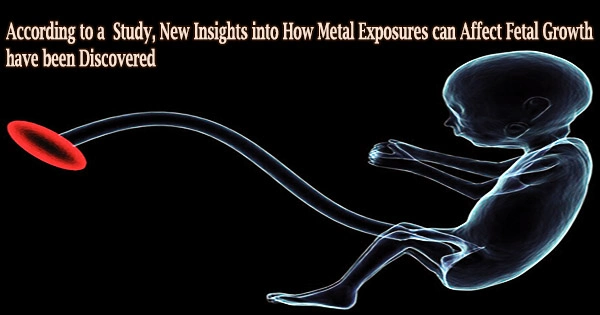Prenatal exposure to mixes of widely found metals can negatively impair fetal growth, according to a new Dartmouth-led study published in the journal Environmental International.
Infants born tiny for their gestational age have a higher likelihood of neonatal death and are more likely to have neurocognitive impairment in infancy and cardiometabolic disease later in life.
A growing number of studies have found that toxic metals are prevalent in the environment, originating from sources such as contaminated food and drinking water, as well as polluted air and dust and that many of these metals can cross the placenta or alter placental function, resulting in reduced fetal growth.
However, previous studies on the effects of metals on prenatal growth have mainly focused on just one metal at a time and within a single community.
“The limitation of that is usually we’re exposed to a complex mixture of multiple metals simultaneously that might interact with each other, and exposure ranges can be narrow in just one population for a given metal,” explains lead author Caitlin Howe, Ph.D., an assistant professor of epidemiology at Dartmouth’s Geisel School of Medicine whose research focuses on toxic metal exposures and their impacts on maternal and child health.
“So, our goal was to look across multiple diverse populations with different types of exposures, so we could get a better sense of the full dose-response relationship for some of these chemicals in the context of the larger mixture,” she says.
Our hope is that we can do a larger study in the future that includes more cohorts so that we can look further into what’s driving those inconsistencies and better understand the potential differences due to geography or other population characteristics.
Caitlin Howe
To do so, the researchers used data from three geographically and demographically different groups in the United States to conduct an environmental mixture analysis of metal influences on prenatal growth.
The organizations, which are based in New Hampshire, Los Angeles, and Puerto Rico, are part of the National Institutes of Health-funded Environmental Influences on Child Health Outcomes (ECHO) Program, which investigates the effects of a wide range of early environmental influences on children’s health and development.
The researchers looked at associations between seven commonly found metals (antimony, cadmium, cobalt, mercury, molybdenum, nickel, and tin) measured in 1,002 maternal urine samples collected during pregnancy and birth weight for gestational age using a novel statistical approach that can account for complex mixtures of pollutants. They also looked into possible disparities between groups as well as the gender of the newborns.
“Our most consistent finding was that antimony, an understudied metal, was associated with lower birthweight for gestational age across all three of the groups and in both males and females, suggesting that it may adversely impact fetal growth,” says Howe.
“So, that’s an element where we would want to identify what the main sources of exposure are so that we can help reduce that exposure to prevent harmful effects on fetal growth in these different populations.”
The greater antimony concentrations found in the Los Angeles and Puerto Rico groups could be owing to their metropolitan settings, as traffic-related air pollution from brake wear and tear, as well as smelting and coal-fired plants and waste incinerators, are known sources of antimony exposure.
Bottled water, on the other hand, could be a significant source of antimony exposure for all three categories. While the researchers did find some group and/or sex-dependent relationships for several of the other metals tested, they lacked the consistency seen with the antimony findings, according to Howe, and so warrant additional examination.
“Our hope is that we can do a larger study in the future that includes more cohorts so that we can look further into what’s driving those inconsistencies and better understand the potential differences due to geography or other population characteristics,” says Howe.
The National Institutes of Health (NIH), the National Institute of Environmental Health Sciences, and the Environmental Protection Agency all contributed to the study.





